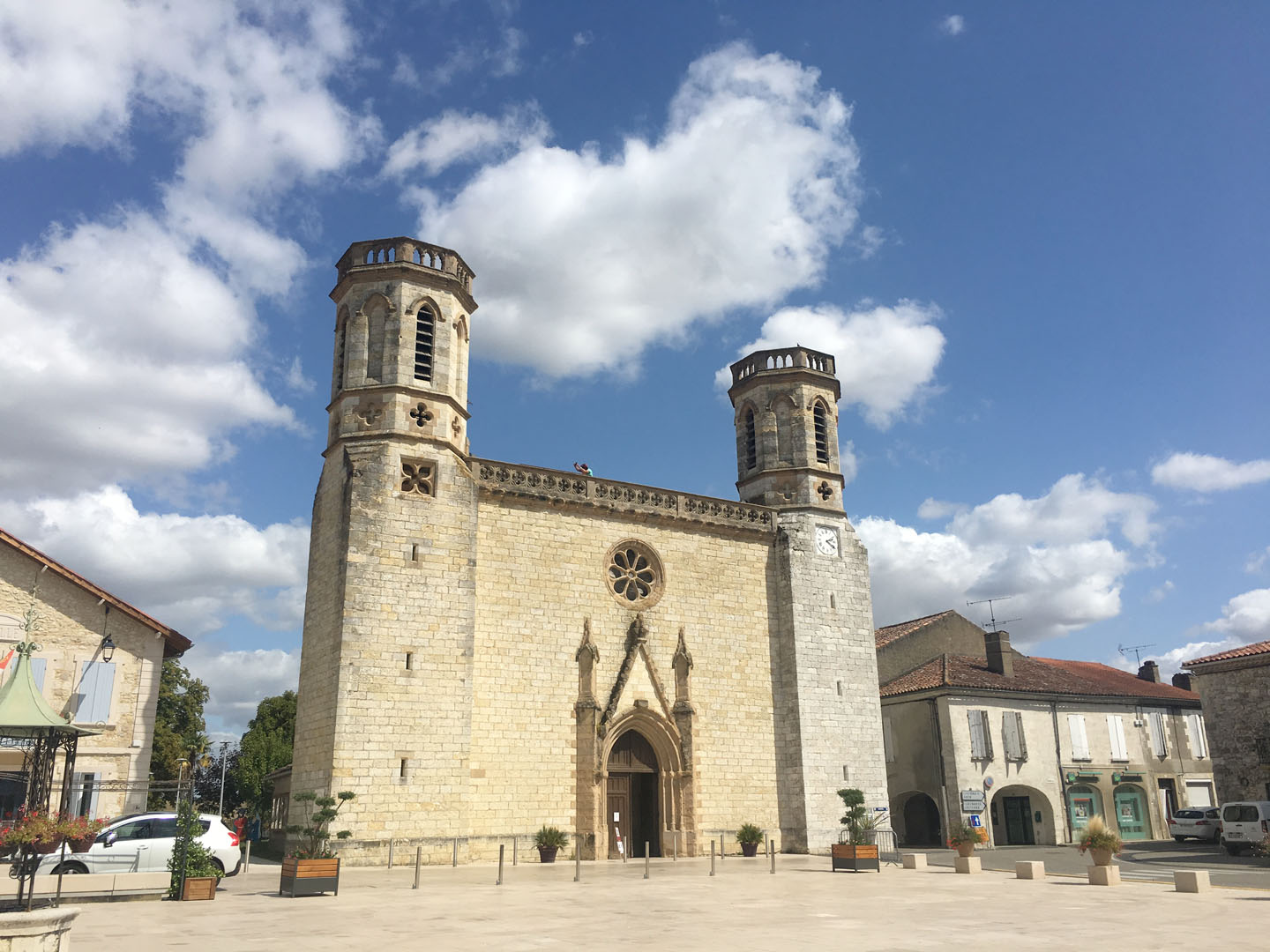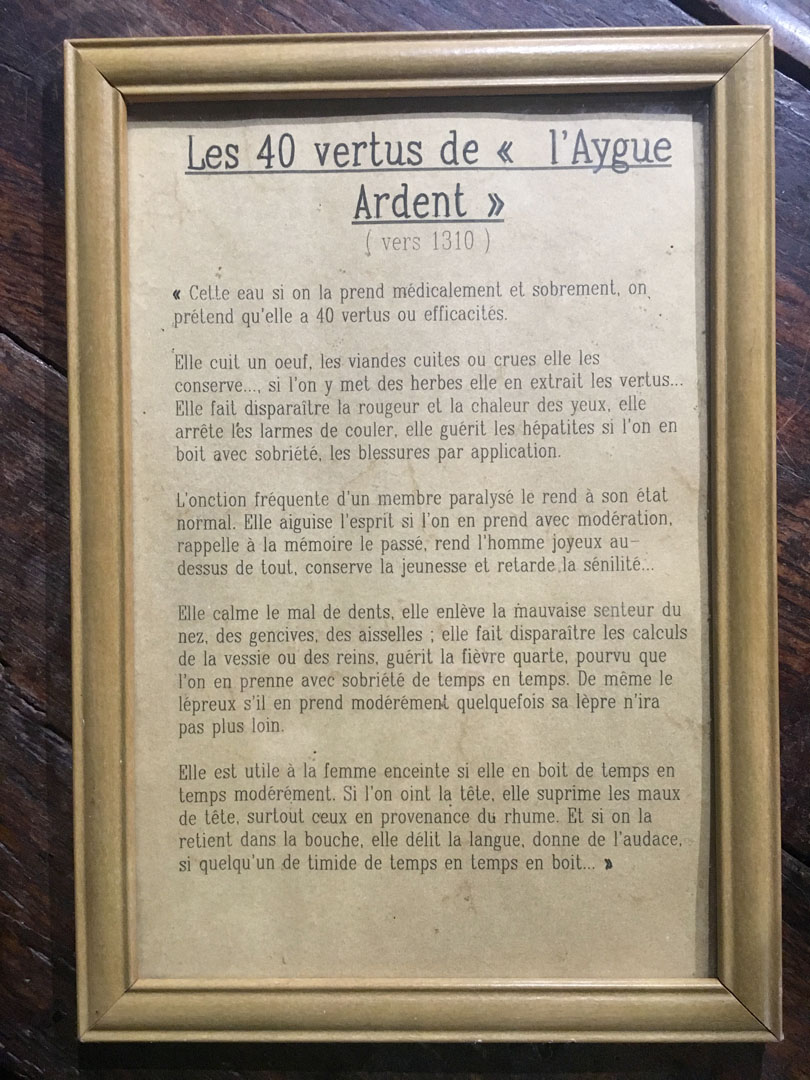A medieval history
Rumours began to spread in the village in the mid-13th century that the abbot of Condom, Montassin de Goalard, wished to purchase land and build a château in the village. The coveted site was situated in a strategic location, less than 8 km from the hustle and bustle of Condom, home to a powerful and wealthy clergy, who was deeply involved in politics and economics. The “first Château de Cassaigne” was built in 1247, the foundations of which are still present seven centuries later. At a time when France and England were fighting over the Aquitaine region, the Château was protected by a drawbridge and 12-metre-wide ditch dug into the rock.

What about the vines?
They are mentioned in various writings from the 13th century onwards. The bishops were already producing wine for their own consumption and to trade for other merchandise. In those days, however, wine aged poorly! To preserve production, the wine was distilled and turned into white wine spirit, the ancestor of Armagnac.
A « jewel in the countryside »
The bishops of Condom were spellbound. Château de Cassaigne became their “second home”. Around twenty of them would regularly stay over and renovate the buildings over the years. Auger d’Andiran (1247-1287) rebuilt the church while Arnaud de Lomagne (1287-1306) erected four towers. Two streets were created in front of the church porch, houses were constructed, and the population increased…
Later on, Louis de Milon (1693-1734), head of the Condom diocese for over 40 years, renovated the estate after several years of looting and fires which destroyed the villages in Gascony. Alexandre César d’Anterroches (1719-1793) dismantled the roof of Château de Larressingle to repair that of Château de Cassaigne. He also renovated the façade and built a road leading to Condom, and the château became a summer residence once again.

« Aqua vitae »,
the water that gives life ?
According to Vital Dufour, physician and abbot of Eauze and Saint-Mont, in his Latin work “To keep your health and stay in good shape” (1310), the “aygue ardente” (fiery water) has more than 40 virtues.

« It can cook an egg; preserve raw meat; alleviate red and burning eyes; stop tears of pain (hot compresses with brandy); cure hepatitis and heal wounds if drunk soberly; cure paralysed limbs in ointment; sharpen the mind if consumed in moderation; recall the past, make people joyful more than anything else; preserve youth and delay senility; calm toothache; remove bad odours from the nose, gums and armpits; make bladder or kidney stones disappear; cure quartan fever if consumed soberly from time to time; likewise it heals leprosy if taken several times; it is useful to pregnant women when taken in moderation from time to time; if anointed to the head, it cures headaches, especially those resulting from colds; if held in the mouth, it loosens the tongue and makes shy persons bold when taken from time to time… »
Escape during the French Revolution
In 1789, church property was handed over to the State.
Château de Cassaigne was put up for auction on 13 April 1791 under lot number 40 for the sale of national goods, and purchased by Justin Thore for 32,000 pounds who sold it not long after to the Monteils family.
A bourgeois residence
In 1840, the Duviard family decided to tear down two medieval-looking towers which had been abandoned to the owls.. They sold the demolition materials (beams, stones, bricks, fittings, etc.) and undertook a large-scale renovation for the wedding of their daughter, Alexandrine Duviard, to Paul Clermond Laborde. They built an apartment, decorated the staircase and ceilings, hung tapestries, created windows, adjoined a distillery, etc.
The ancient château became a bourgeois residence which employed seven or eight maids. The following generations continued to maintain it, up to the current owner, Henri Faget. His grandparents Maurice Faget (1877-1942) and Jeanne de Laforcade (1885-1963), great-grandparents Pierre-Henri Faget (1847-1928) and Marie-Louise Laborde (1852-1928) also refurbished the château.
The last steward of the bishops purchased the Cassaigne estate.
In 1818, Bertrand Duviard, who worked as steward at Château de Cassaigne on behalf of the bishops of Condom, began purchasing land in the surrounding area and took out a loan to acquire the château from Guillaume Édouard de Morlan. His son, Joseph Duviard (1787-1837) inherited it, later founding a distillery and selling his wine spirits as far as Bordeaux and Toulouse.
What are the origins behind the estate’s name? Cassaigne comes from the Latin « cassanea », meaning « the place planted with oak trees ».
What role did women play at Cassaigne?
- Cécile Escoubès (1762-1840), the wife of Bertrand Duviard, helped develop the vineyard.
- Joséphine Barrère (1796-1885), the daughter-in-law of Cécile Escoubès, modernised the facilities.
- Marie-Louise Laborde (1852-1928), grandmother of the current estate owner, embellished the château and restored the English-style garden with exotic species.


